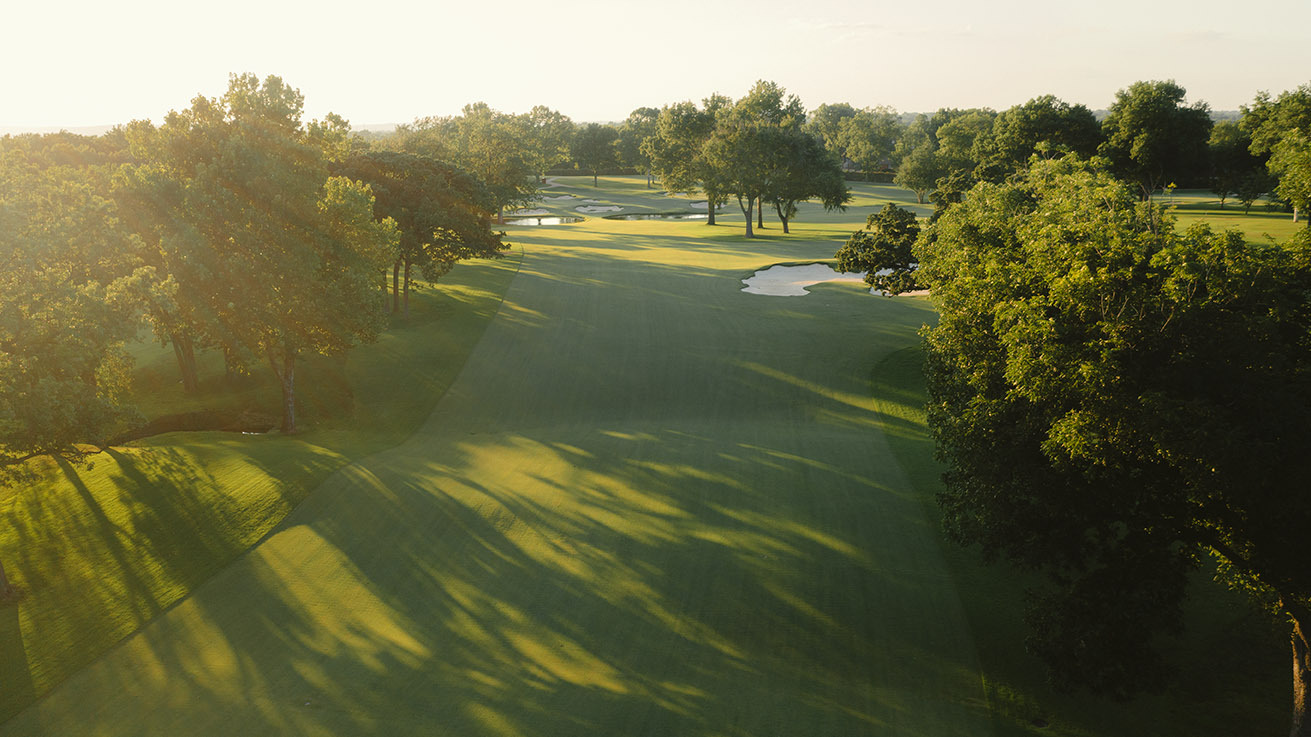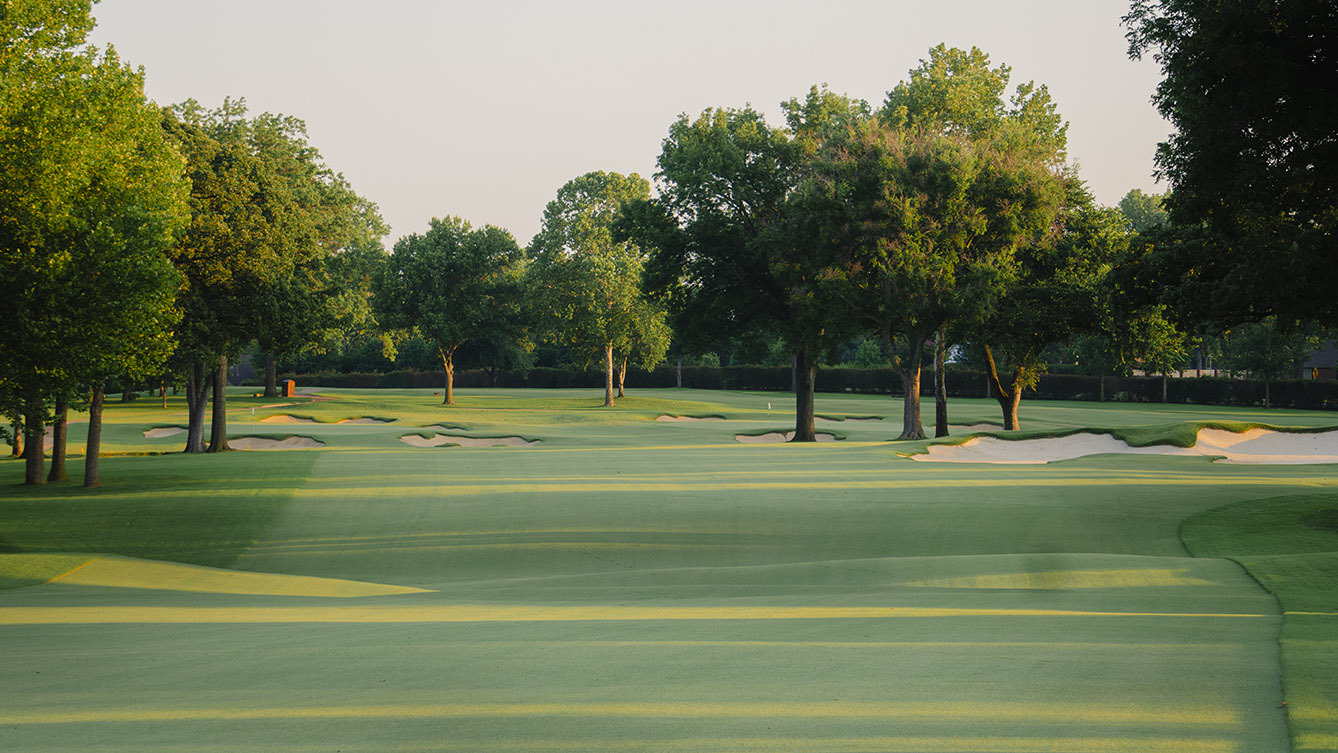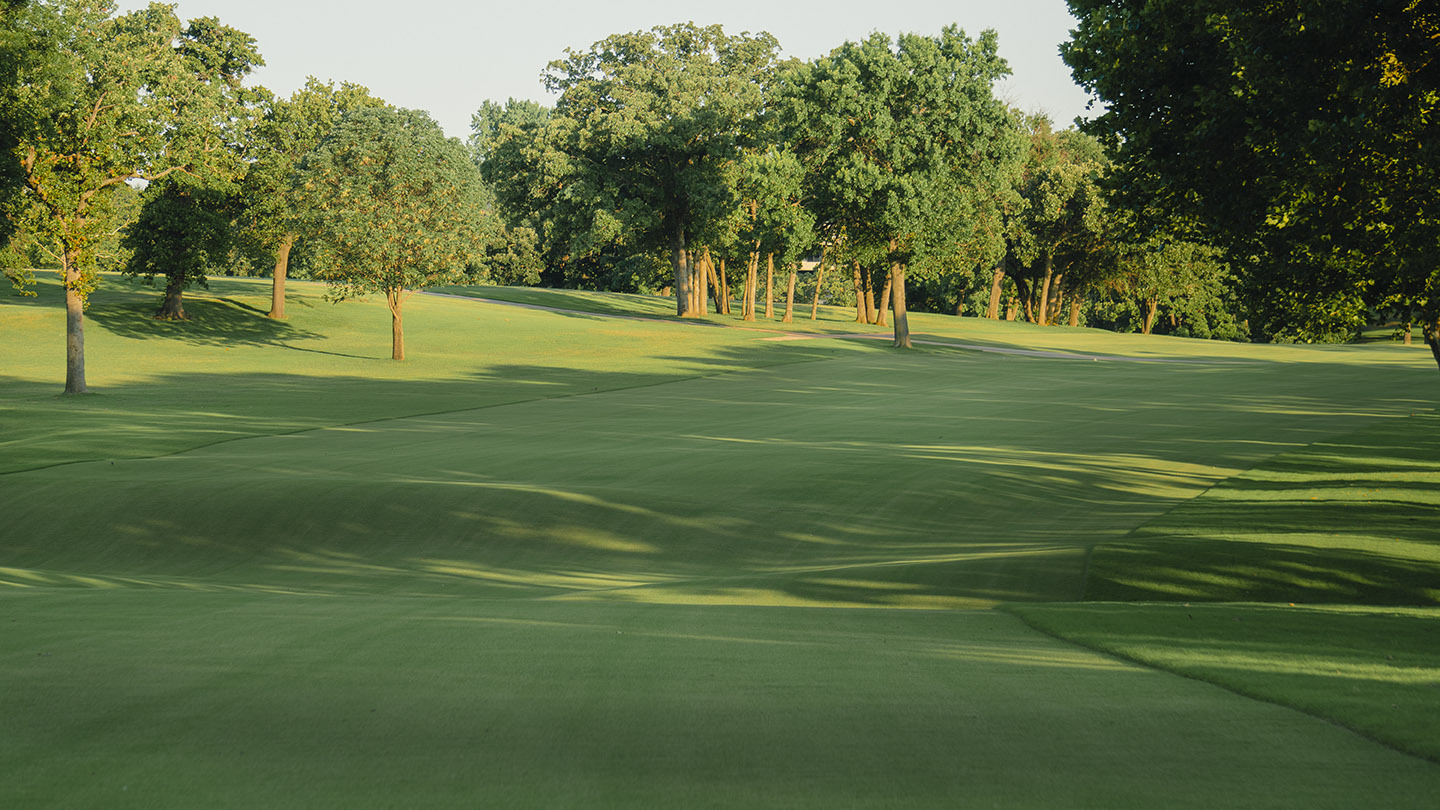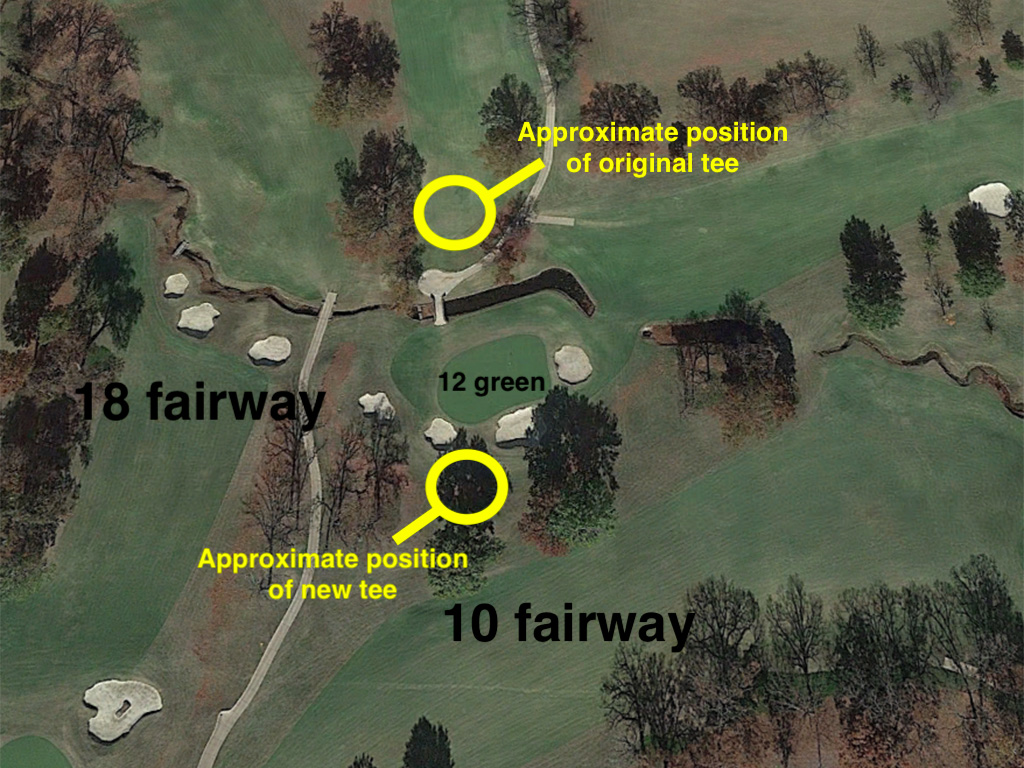Will Zalatoris was ready to hit his drive, but he had to wait for Tiger Woods, Rory McIlroy, and Jordan Spieth to hit their approach shots. That’s because Zalatoris was on the 13th hole at Southern Hills Country Club, which tees off directly over the 12th green.
this is fine pic.twitter.com/OiDtDCeSMd
— deepfriedegg (@deep_fried_egg) May 19, 2022
Zalatoris is a fast player, and he was visibly impatient. He stood behind his teed-up ball and patted down the grass with the head of his driver. When the third approach from the previous group landed, he pulled the trigger quickly. A miss to the right. It was one of the few lowlights in Zalatoris’s four-under opening round.
A tee shot that plays directly over the previous hole’s green is an unusual sight in major-championship golf. And it certainly wasn’t part of Perry Maxwell’s original design of Southern Hills. But there’s a good reason that the 13th tee is where it is at this year’s PGA Championship.
Just to give folks an idea of the crossing at 12/13 — this is the 12th green in the foreground w/ the 13th tee immediately behind it. Tee shots on the 632-yard par 5 literally cross over the green. Was an absolute scene when the Woods/Rory/Spieth grouping came through. pic.twitter.com/d1PfKYcdaA
— Brendan Quinn (@BFQuinn) May 19, 2022
The original tee is in the intuitive position: to the right of the 12th green. From there, the par-5 13th hole measures about 530 yards. The topography is the primary challenge. The land rises up from the tee before tumbling down into a dry, grassed-over gully. The gully itself is full of micro-undulations. On the other side of this landform, the fairway gradually descends before bottoming out in a pond. The green is on the other side of the water. It’s smallish, tilted back to front, with shallow shelves for pins.
The intent of the design is to force the player to make a difficult risk-reward decision on the second shot. A well-struck tee ball will come to rest in the gully, so to reach the green, the player has to hit a fairway wood from an uneven lie to a severe green surrounded by hazards. But the conservative option isn’t much more appealing. The layup zone is downhill, which means another uncomfortable lie, this time for a wedge into a green that offers little forgiveness for short or long misses.
All of this adds up to a dynamic risk-reward par 5.
-

The 13th hole at Southern Hills. Photo: Andy Johnson
-

The 13th hole at Southern Hills. Photo: Garrett Morrison
-

Looking back on the gully crossing on the 13th hole at Southern Hills. Photo: Garrett Morrison
But if the traditional 13th tee were used at the 2022 PGA Championship, the hole would effectively become a par 4. Some longer players would be able to reach the other side of the gully with their drives, leaving a mid-iron, maybe less, into the green. This is the world that 21st-century equipment and instructional technology has created.
So in order to maintain No. 13’s strategic balance and its identity as a par 5 for major championships, the club had to find a new back tee. The problem is, the holes are packed tightly together at Southern Hills. The new 13th tee couldn’t be placed over the back of the 12th green because that’s where the 18th fairway is. The only available spot was left of the green, on a natural rise just short of the 10th fairway. From there, the 13th hole measures a robust 632 yards.

Google Earth
No doubt it’s an ungainly solution. But early returns indicate that it works for elite tournament play. In the group I followed this morning, one player, Cameron Smith, went for the green in two. He hit a fairway wood from a hook lie in the gully and hung it out right, but he hit a nifty bump and run to get up and down. Hovland and Zalatoris, who laid up after missing right off the tee, both made birdie as well. They had to earn it, though: Hovland got his wedge to sit on the right level of the green, and Zalatoris sank a 20-footer.
So the lengthened 13th hole did its job. It put players in awkward positions, gave them legitimate risk-reward options, and made them work for birdies.
No. 13 isn’t the only hole at Southern Hills with a strangely located tee box. The third tee is in the middle of the par-3 sixth hole’s corridor. On No. 18, players tee off from a grove of trees between the eighth and 17th greens. These new tees were created to restore design intent in the face of modern distance gains, and they do a serviceable job of that. But they create some hitches in Southern Hills’ routing.
These hitches represent a larger truth: the fit between today’s professional game and yesterday’s greatest courses is becoming more and more awkward.


 by
by 
